Explore & Travel
[Weekend Getaways] Beautiful Hoi An
Situated on Vietnam’s central coastline, Hoi An is a beautiful ancient town
Published
4 years agoon
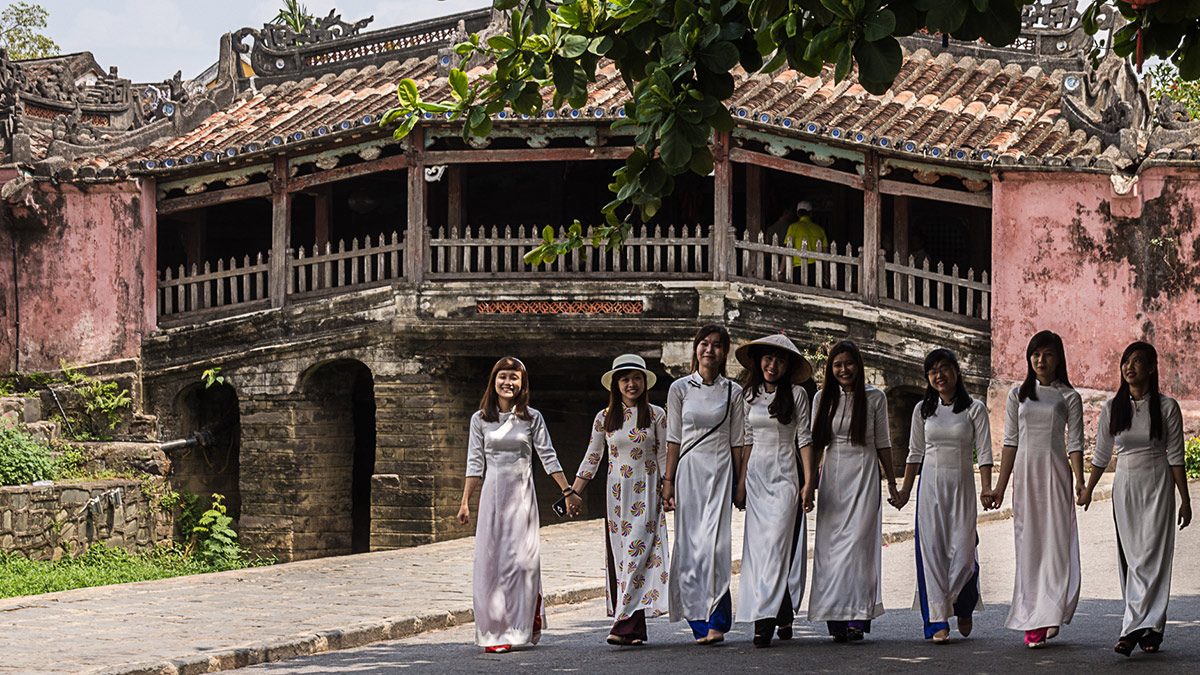
A trio of bicyclists suddenly stops in the middle of a lush rice field. Besides the gentle splashes of a wading water buffalo, a pastoral silence falls over the green space. In the east, the coastal sky darkens with deep purples. For five wordless minutes, the awestruck bicyclists watch the fiery, western horizon and its reflection in a nearby river. Revitalized by the heavenly sunset, the bicyclists pedal into the quickly falling night. Streetlights begin to turn on, illuminating the way to Hoi An, a small coastal town in central Vietnam.

Hoi An offers visitors a vibrant, multicultural experience under the glow of its famous lanterns. Once a bustling trading port, Hoi An translates to “peaceful meeting place.” Throughout the town, various cultures easily blend together bestowing Hoi An with a unique environment. A short walk through Hoi An’s Ancient Town reveals Japanese bridges, French colonial architecture, Venetian-style canals, traditional Vietnamese cafes and modern Australian restaurants. No matter their point of origin, everyone basks in Hoi An’s year-round sunshine.
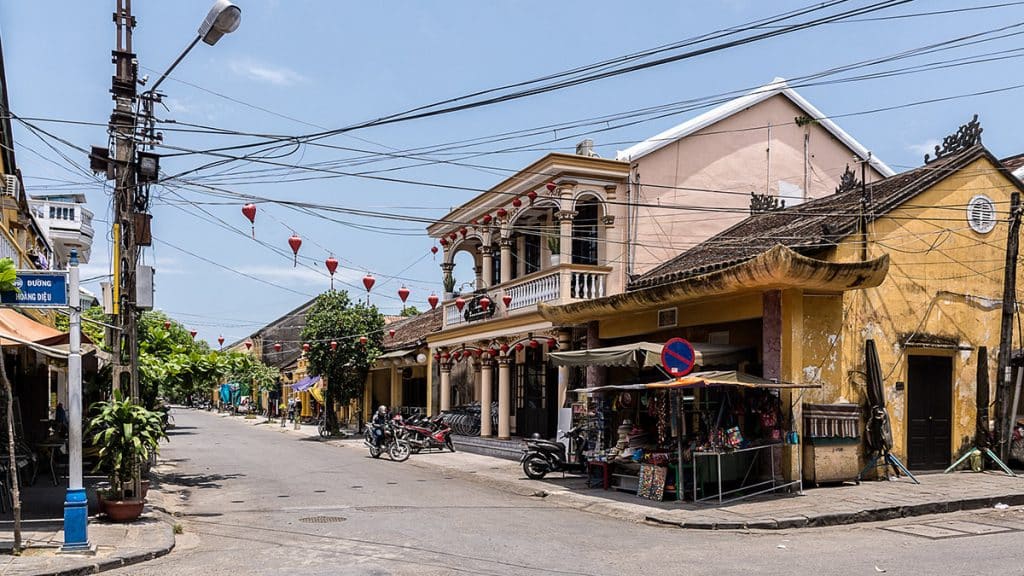
At almost 800 miles south from the capital, Hoi An is reachable for people in Hanoi via train, plane, or bus. Hanoians with time on their hands may prefer the 16 to 17-hour train ride, cutting through Vietnam’s exotic countryside. For especially indulgent passengers, private berths can be had for around 1,800,000 VND. The cheaper and most popular option is a flight, with costs starting at 500,000 VND. The nearest train station and the airport are located in Da Nang, which is just 30 minutes from the sunny, seaside town. Da Nang offers a shuttle bus for around 140,000 VND. To directly arrive in Hoi An, there is a charter a sleeper bus from Hanoi for only 360,000 VND.

While Hoi An’s Ancient Town is a must-see, finding lodging is not ideal when it is busy. As a popular tourist destination, the decorative city’s wide streets can become cramped in peak tourist season, though with the current closure of international flights, things are beautifully quiet. Where packs of inexperienced, bicycling tourists once clashed with ruthless Vietnamese motorists and mobs of shoppers, now all is quiet–many will love the new, quieter Hoi An. To avoid the confusion of the city roads, stay at one of the relaxing hostels found alongside the pristine An Bang Beach.

During Chao’s visit, Under the Coconut Tree Homestay provided us with fabulous hospitality, a hearty breakfast, and some of the softest mattresses you will find in Asia. We still dream about sinking into the homestay’s plush bedding after a blissful massage from a nearby spa. We would awaken to the crash of tremendous ocean waves, wishing us good morning. The cost was agreeable at 160,000 VND for a single dorm-room bed, and the homestay also provided bicycles for 30,000 VND per day. Located 5 km away from the Ancient Town, the distance allows for a pleasant ride through sun-kissed farmlands and over breezy rivers.
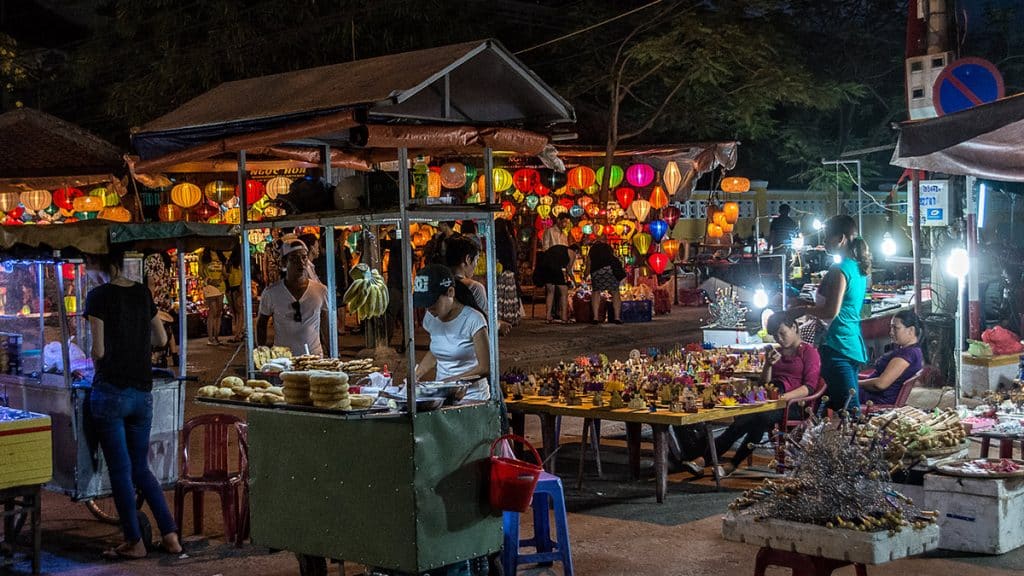
For those in search of amusing beach reads or just to escape the heat, head over to Randy’s Book Exchange. With his shop resting in the shadows of Cam Nam island, the titular Randy Slocum spends his days collecting books and nursing glasses of tequila. “I only drink good tequila,” he says smiling, while kindly pouring us a glass.

The store is dark and cool, keeping his vast inventory of books safe from the harsh, tropical sun. Leaning back in his Slocum chair, happily recalls literary trends of the past decade. Originally planning on opening a taco bar, Randy instead took advantage of his surplus of paperbacks and Hoi An’s then untapped book market. As a resident of thirteen years, 70-year-old Slocum still enjoys the town’s tranquil early hours. “Mornings in Hoi An are just magical. Streets are cleaned overnight; tourists are still sleeping. I bike along the riverfront, out to the paddies, and then go out to breakfast at Dingo Deli before I start my chores.”

In Vietnam’s rapidly industrializing era, Slocum does not fear the encroachment of modernity: “One of the reasons I moved here is that Hoi An can’t technically change too much,” he says. “It is a World Heritage site so it has to stay the same.” Forever protected, Hoi An and its bewitching atmosphere will continue to dazzle visitors for generations.
The next day, the ladies button our shirts for us as we model in front of the store mirror. “Now when you wear this, you will think of us,” they say, sweetly.
Over the centuries, Hoi An has not only been a prominent commercial center but also an artistic hub. Any souvenirs bought here will surely be the focal point of any room. Calligraphy experts create intricate paintings alongside secret messages inked in ancient Vietnamese lettering. Sculptors birth laughing old men with mossy beards from dense bamboo roots. Leather-makers craft elegant purses and handbags from buffalo hides. However, the best shopping found in Hoi An is the beautiful tailoring, available at low-cost.
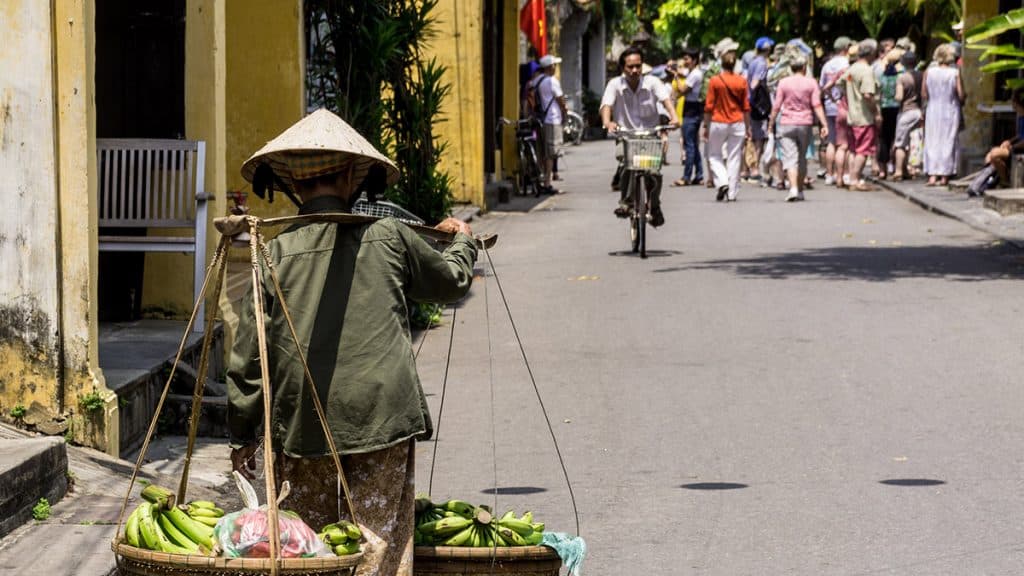
The skilled ladies of Hoi An’s cloth market gently measure our haunches one sunny afternoon. Chuckling at our height, they jot the numbers down with a playful, exaggerated sigh. Afterwards, they show us their eye-catching silk patterns of flowers, tropical plants, and other bright colors to match the remarkable Vietnamese sunset. We haggle over the price before deciding on 700,000 VND for two silk shirts. The next day, the ladies button our shirts for us as we model in front of the store mirror. “Now when you wear this, you will think of us,” they say, sweetly. “You will think of Hoi An.”
The culinary arts are also well represented throughout Hoi An. As a result of its international roots, Hoi An features both eastern and western tastes. The Australian-owned Dingo Deli, serves us delicious sandwiches, all-day breakfasts, and tantalizing baked goods. The popular delicatessen also features a quiet workstation, catering to the needs of professional nomads. Found in a busier part of town, the Dingo menu is not the cheapest. For a similar, cheaper dining option closer to the beach, check out Cosy Corner Cafe. Their signature avocado toast is not to be missed.

Those craving Vietnamese food also have plenty of delicious options. Veggie lovers will love Huong Tuc Bi, a pay-what-you-can vegetarian restaurant. Just down the street from Dingo Deli, the restaurant serves Hoi An’s signature meal: cao lau. This noodle dish is enhanced by a generous helping of leafy greens and herbs. At non-vegetarian joints, cao lau may also feature marinated pork or shrimp.
Hungry for a sandwich? Head over to Banh Mi Phuong. Praised by American chef and writer Anthony Bourdain, the restaurant is considered one of Hoi An’s best–more than a few people will tell you this is the place to get the best banh mi in the whole of Vietnam. Dozens of customers patiently wait in a crowded restaurant for a sandwich with their choice of pate, eggs, chicken or, more obscure, ostrich meat. To be served quickly, do not wait by the counter. Customers who make a beeline for the seating area are served first. Once given the banh mi, you are free to take it with you and enjoy it while exploring Hoi An’s vibrant nightlife.

The music of the Ancient Town’s bars pulsates late in to the night. Despite the friendly hawkers offering huge deals on copious amounts of alcohol, the real fun is to be had on the streets, under the psychedelic glow of Hoi An’s lanterns. Now a staple of Hoi An culture, these lanterns once served the practical use of providing light for the city’s dark alleyways and canals. On the fourteenth of every lunar month, a lantern festival brightens the night sky with a rainbow of colors.
The cycling trio finally arrives in the center of Hoi An. Their flushed faces are further reddened by glowing silk lanterns. Once again, they stop to stare at the lights except this time there is no single brilliant sunset. Rather, hundreds of multicolored lanterns and candles set the night ablaze. They watch as a French couple passionately kiss in a gondola, as their Vietnamese boatmen hums untranslated love songs. As they glide over the black waters, the boat’s orange lanterns join an armada of other boats and their own colorful lights. The illuminated boats drift under bridges, banding to form a makeshift rainbow over the black water.
You may like
-


[Op-ed] Why you should cancel your Tet holiday and stay home
-


Vietnam trade union federation calls for workers to restrict Tet travel
-
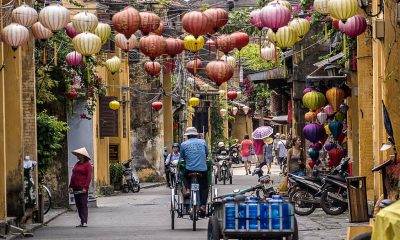

Hanoi and Hoi An enter world’s most highly rated destinations
-
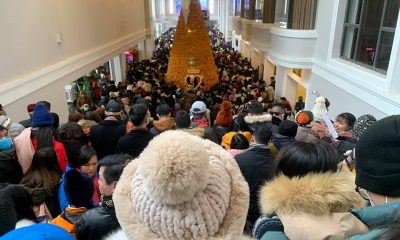

People all over Vietnam flock to travel during New Year holiday
-


Vietnam’s storms of the century
-


Typhoon Goni heading towards South Central Vietnam
-


Rescue team searches for missing people in Quang Nam landslides